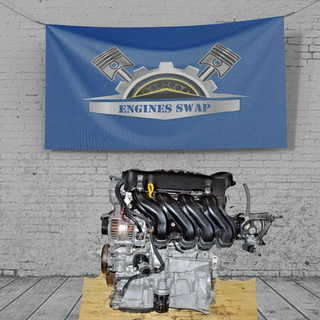
1. Determine Your Needs
Before starting your quest, clearly identify the specific engine requirements to your vehicle:
Make and Model Compatibility: Ensure the engine matches your car or truck’s make, model, and year.
Engine Specifications: Verify the engine size, type, as well as any specific features required.
2. Source Reputation
Choosing a good source is crucial for purchasing an excellent used engine:
Dealerships and Professional Mechanics: Often provide more reliable options and might offer warranties. You can also check enginesswap they supply good quality engines as well as assured warranty
Auto parts store : Can be a good source but always check the engine’s condition thoroughly. BluePrism Automotive is certainly one
3. Engine History
Understanding a history of the engine helps assess its potential lifespan:
Mileage: Lower mileage could mean less wear.
Maintenance Records: Look for engines with detailed service histories.
Reason for Removal: Know why the engine was taken out from the original vehicle.
4. Physical Inspection
A thorough inspection can reveal a good deal about the engine’s condition:
Visual Check: Look for warning signs of damage, rust, or leaks.
Compression Test: Ensures the engine maintains adequate pressure.
Oil Condition: Check the oil for contamination or unusual color.
5. Engine Warranty
A warranty provides satisfaction and protection against future issues:
Duration and Coverage: Understand the length of the warranty and what parts or issues are covered.
Source of Warranty: Prefer warranties from reputable dealers or manufacturers.
6. Compatibility and Fitment
Ensure the used engine will fit and be employed in your vehicle without extensive modifications:
Engine Mounts: Confirm the engine mounts align with your car or truck.
Electronic Compatibility: Verify how the engine’s electronics and sensors are compatible with your automobile’s system.
Transmission Match: Ensure the engine is compatible along with your transmission type.
7. Cost Analysis
Analyze the cost with the used engine and compare it to options:
Price: Ensure the price is reasonable and competitive.
Installation Costs: Factor in the price of professional installation.
Potential Repairs: Consider any extra costs for parts or repairs.
8. Seller’s Return Policy
Understand the seller’s return policy when the engine isn't as described or doesn’t fit:
Return Window: Check the length of time you have to return the engine.
Restocking Fees: Be aware of any fees related to returning the engine.
Condition for Return: Ensure you understand the condition requirements for the return.
9. Vehicle Identification Number (VIN)
Checking the VIN can provide additional assurance:
Match VIN: Ensure the engine VIN matches your vehicle’s requirements.
Vehicle History Report: Use the VIN to acquire a history report from the engine’s original vehicle.
10. Professional Assistance
Consider getting a specialist to make an educated decision:
Mechanic’s Opinion: A mechanic can offer an expert opinion around the engine’s condition and compatibility.
Engine Diagnostics: Have a professional run diagnostics to evaluate for potential issues.
Purchasing a pre-owned engine on the market involves expose process to ensure you get a trusted and efficient replacement. By with the factors outlined above, you can make an informed decision that balances cost with quality and longevity. Always prioritize sourcing from reputable sellers and verifying the engine’s background and condition before making a purchase.